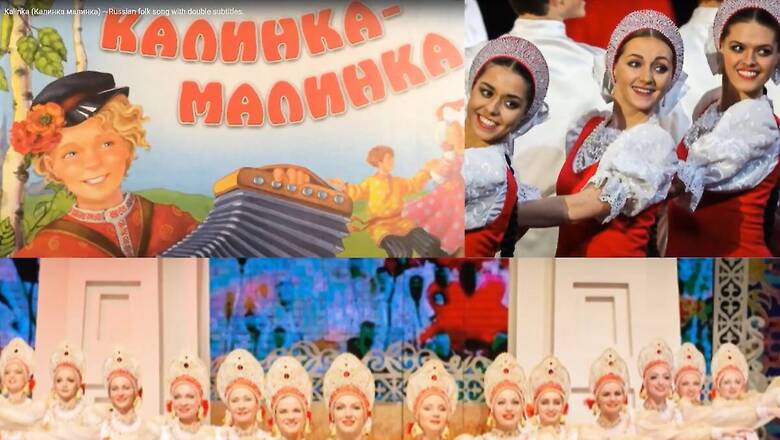
views
Leaders of delegations from BRICS countries were treated to a gala concert on Tuesday as part of the cultural programme at the high-level summit in Kazan, Russia.
During the gala dinner, the BRICS heads of state, including Prime Minister Narendra Modi, were seen enjoying a performance of the legendary Russian song “Kalinka.” It is a lively folk song composed by Ivan Larionov in 1860 and has now become a global cultural icon.
What is the history of ‘Kalinka’?
First written for a theatrical performance in the southwestern Russian city of Saratov, the song celebrates the snowball tree and features a catchy refrain that has captivated audiences for over a century. Its upbeat tempo and playful lyrics reflect themes of love and nature.
Leaders from BRICS countries attended a gala concert in #Kazan. The program included a performance of the legendary song “Kalinka.”#BRICSSummit pic.twitter.com/6Xlzi8ypSu— Abhishek Jha (@abhishekjha157) October 22, 2024
World War II
“Kalinka” gained popularity during World War II after being adopted by the Alexandrov Ensemble, the official choir of the Soviet Armed Forces. Their renditions helped raise “Kalinka” to an anthem of strength and national pride. The ensemble’s performances often turned the song into an operatic experience, further solidifying its status as a symbol of Russian culture.
Fast forward to the 21st century, “Kalinka” has become synonymous with Russian identity and is often seen or heard in films and international events. In 2018, “Kalinka” was performed during the closing ceremony of the FIFA World Cup in Moscow.
Bollywood Connect
The song’s melody has also found its way into various media, including video games like Tetris and Payday 2, where it adds a Russian flavour to gameplay. “Kalinka” has inspired adaptations across genres including Bollywood movies. A notable example is the Priyanka Chopra Jonas-starrer 7 Khoon Maaf, which includes a song titled “Darling.”
This cross-cultural exchange underlines how “Kalinka” continues to resonate with diverse audiences globally. The song’s charm has made it a regular at celebrations and sporting events. Its ability to bridge cultural divides speaks to the universal themes of love and nature that it embodies.




















Comments
0 comment